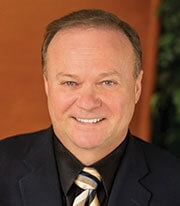![Goralka Law Firm George Hicks Fancher]() California’s Tallest Tomb is a Testament for the Need for a Detailed Estate Plan
California’s Tallest Tomb is a Testament for the Need for a Detailed Estate Plan
by John M. Goralka
It's a Long History.
This article is courtesy of Katie Dowd of SFGate and my brother Bob who sent this to me. California’s tallest tomb can be found off Highway 140, near Merced, and features a 68 ft. tall white obelisk.
The tomb is for George Hicks Fancher who arrived in California in 1850. After an unsuccessful attempt at mining, he found great success at farming. His primary crop was wheat and he helped found the Mercy Savings Bank. George was believed to be the wealthiest man in the county at his death in March, 1900. His net estate was worth $1Million at that time which would be $37 Million if adjusted to today’s value with inflation.
George never married and had no children. He was survived by siblings, nieces and nephews. George wrote his will on note paper from the Lick House Motel. In part, he provided in his will that “I set apart from my estate for my funeral expenses and proper internment of my remains and a suitable monument to my memory, $25,000.” (Adjusted for inflation this would be $923,000). This simple act would result in 10 years of litigation.
In partial satisfaction for the Memorial, the executor sought to donate $20,000 to Merced County for a memorial library in George’s name. George’s brother and others envisioned instead a towering tombstone for George’s grave and was sued to prevent that gift. In 1905, five years after George’s death, a Merced county judge agreed with and ruled in favor of the proposed library. The Judge opined that the terms “monument” and “building” were almost synonymous, and that the library seemed to be a reasonable and proper memorial to George.
George’s brother disagreed and pursued an appeal all the way to California’s Supreme Court. In 1910, ten years after George’s death, the Supreme Court ruled that the terms “building” and “monument” did not mean the same thing. The money was spent on the giant monolith seen today which remains the tallest tomb in California. Perhaps the best lesson from this story was published in the Stockton Evening Mail which said in part as follows: “the manifest lesson of this case is that rich men in making a will should be a little more careful to define just what they want.”
This lesson was only learned after 10 years of litigation. George was already long buried, and his grave had to be moved to be buried under the memorial. What is unknown is the total amount of legal fees and energy devoted to this litigation and who, outside his family, remembered George when the memorial was finally built. As we see the picture of the memorial and the weeds surrounding that, which would have been a better memorial, the obelisk and tomb or the library?
In today’s world of do it yourself planning, we already see an increase in probate and trust litigation. Simple mistakes, such as George’s expression of what George believed to be a simple bequest, can force that litigation. Some years ago, we assisted with the probate of a modest estate and a holographic or hand written will. We believe that the decedent wanted to leave his estate to his surviving or then living children and to the children of any deceased child. However, the language actually used left the entire estate in equal shares to the group composed of the living children and grandchildren. This complicated the estate administration greatly. We should all be very careful and precise describing what we want.
Thank you to Katie and Bob. I have seen the monument, but never knew the story. For more of the story, click to read Katie’s article: On the road to Yosemite is Calif.'s tallest, most unexpected tombstone (sfgate.com)

